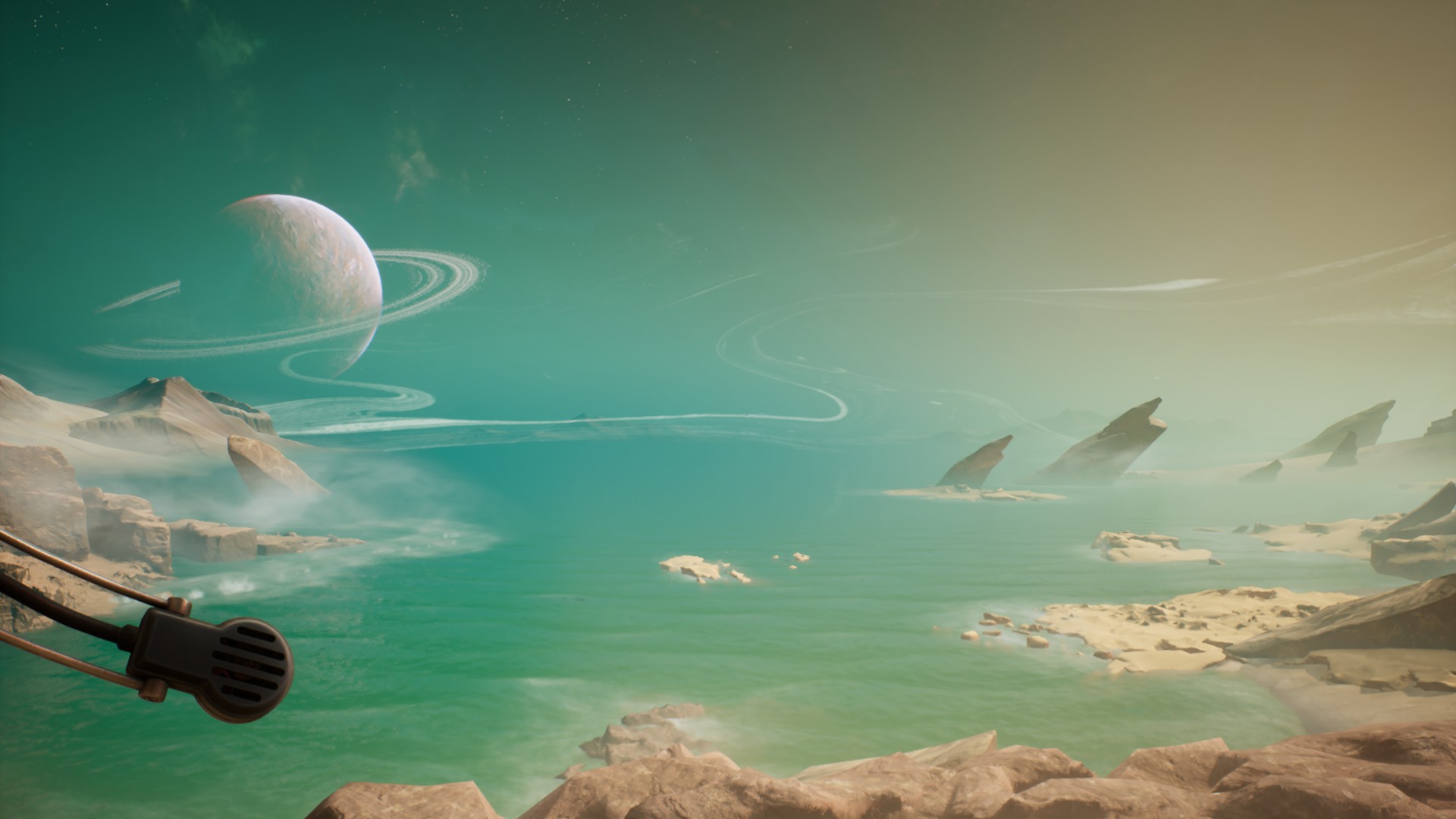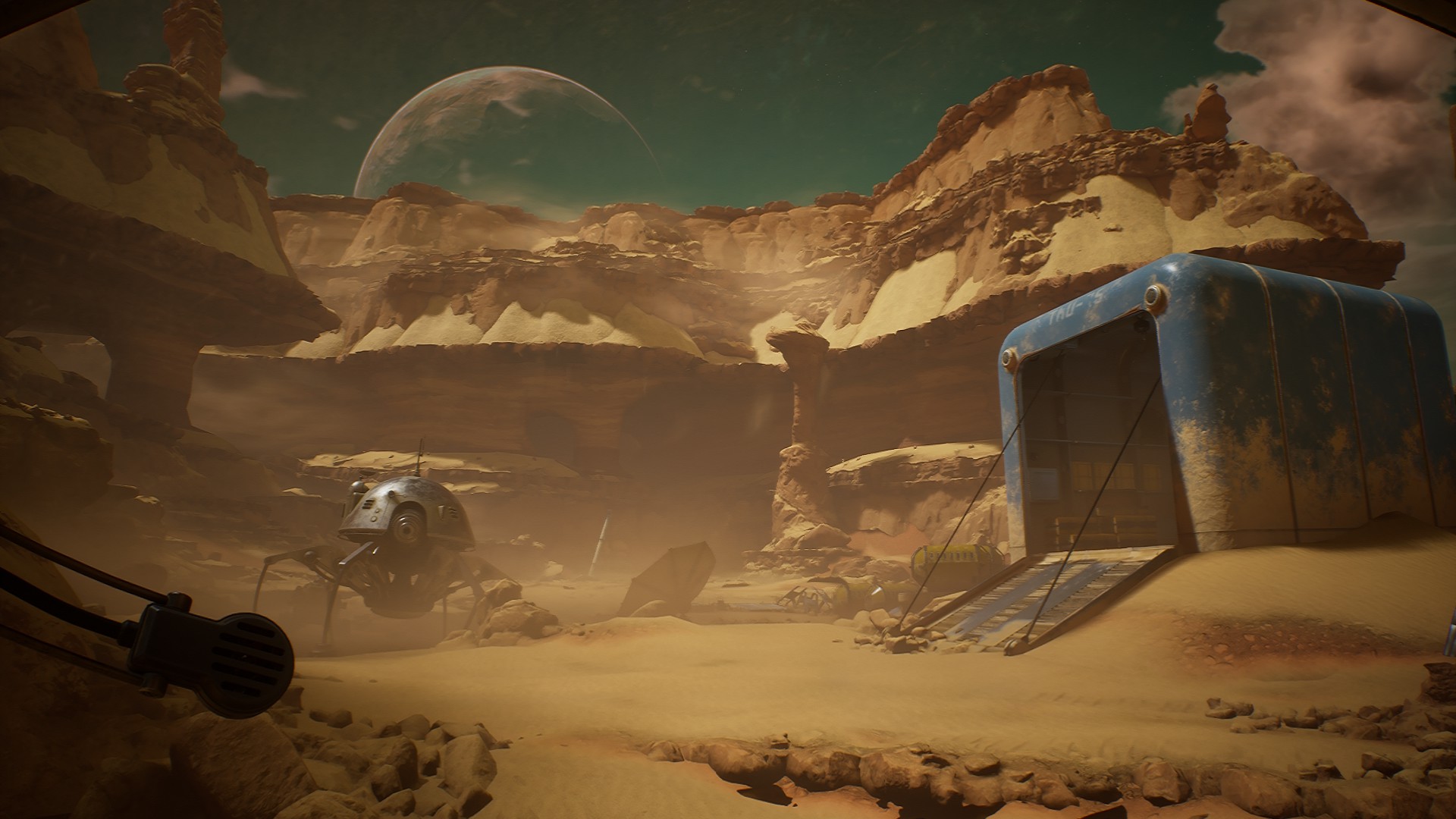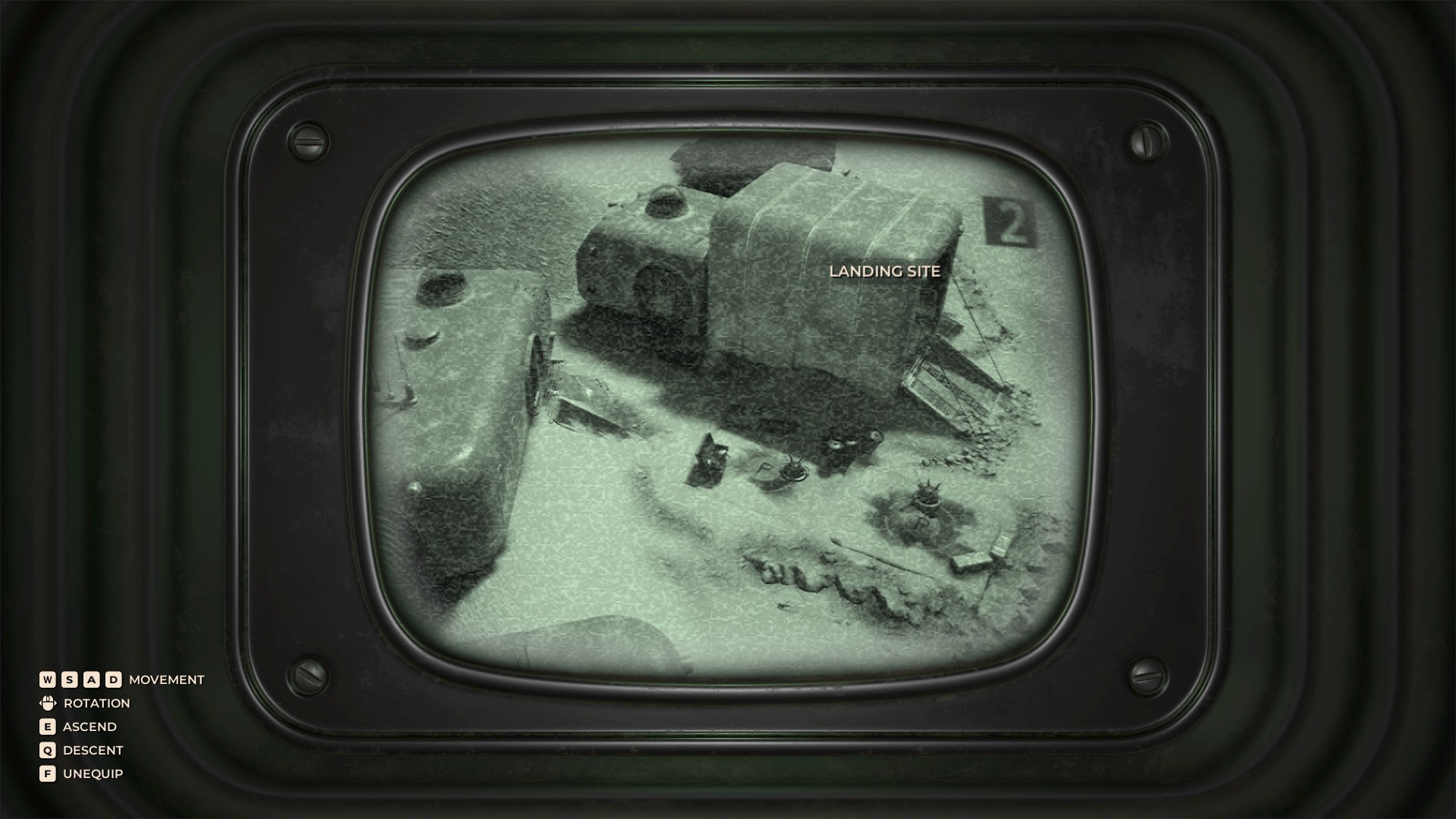Our Verdict
An admirable adaptation of a classic sci-fi story, despite a few stumbles.
PC Gamer's got your back
What is it? A narrative-led first-person adventure based on Stanislaw Lem’s 1960s sci-fi novel.
Release date November 6, 2023
Expect to pay TBA
Developer Starward Industries
Publisher 11 bit studios
Reviewed on RTX 2070, i7-10750H, 16GB RAM
Steam Deck TBA
Link Official site
Adaptations of novels are still rare among games, and perhaps that’s understandable given the challenges involved. The Invincible is a case in point—Starward Industries was always going to have its work cut out visualising Stanislaw Lem’s dense descriptions of an alien planet, and that’s before folding believable characters into the mix along with ruminations on human existence. Yet happily, the end result is a positive advert for the process—The Invincible largely succeeds in exploring this less visited frontier.
For starters, Starward makes life a little easier for itself by refusing a direct adaptation of the 60s sci-fi story. There the plot centred on the Invincible itself, a mountainous starship loaded with crew, robots and enough weaponry to destroy the planet of Regis III it landed on, with the aim of tracking down a previous mission to the lifeless world that had mysteriously gone silent. The game reduces the scale, placing you in the spacesuit of Yasna, one of a crew of six scientists who land on Regis III to conduct research, shortly before the Invincible is due to arrive. Curiously, what follows could almost exist on the same timeline as Lem’s work, but also recontextualises some of the book’s memorable scenes with its new characters, effectively remixing the tale—a kind of parallel universe retelling, if you will.
Whether you’re familiar with the source material or not, though, you’ve probably guessed that Regis III harbours some sinister secrets, ensuring you won’t merely be collecting samples and heading off home. Problems start when Yasna wakes up alone on the planet's surface missing a chunk of recent memory. The situation only worsens when your commanding officer, running the mission from orbit, explains he’s lost contact with the other four researchers on the ground. Once you’ve regathered your bearings, then, your first task is to track them down.
The journey here is a mostly linear one, focused on the challenges of navigating the landscape, and fresh objectives that spring up as you begin to unravel alarming truths. Indeed, as much as you’ll be keen to locate your colleagues, it’s often the world itself that entices you forward, not least thanks to the game’s handsome aesthetics. Visually, Starward’s commitment to a rendering of 50s and 60s retrofuturism transforms the scenery into a living painting. Deep coral reds lounge beneath ocean blue skies, while strange metal growths claw up like cubist electricity pylons, and bursts of wild weather keep you on your toes. Somehow, though, even these grand sights are gently upstaged by the score—a covert electronic hum whose undulations seem both to follow and dictate the tribulations of your adventure.
The relationship between this setting and the human technology imposed upon it is equally fascinating. You come into contact with a host of domed machinery, robots with flexi pipe arms, tape recorder computer drives, and smooth cased vehicles that recall Soviet space race triumphalism. Yasna is equipped with some delightfully retro gadgets as well, from her map—a hybrid of book and screen—to binoculars with manual distance and focus dials, and a handheld tracker spotted with LEDs. Before long, you integrate these tools into your navigational process, and rely on their readouts absolutely.
All too human
As for Yasna herself, she’s a personality as well as a tangible physical presence. Much of the time, she remains in radio contact with her irritable commander, Novik, the pair bickering over next steps one minute, analysing and theorising the situation like good scientists the next. When she’s alone, while she talks to herself a little too much, her voice conveys a struggle between exhaustion and frustration on one side, her innate resourcefulness and curiosity on the other. Meanwhile, the game’s animation and camera work are more quietly expressive. Climbing a rock face, Yasna’s view fixes on the positions of her hands then feet, checking her grip is secure. Every door handle is pulled with a visibly appreciable weight. Arduous tasks end with a pause for breath. As such, while it’s not altogether inaccurate to describe The Invincible as a walking sim, it becomes a highly involving one.
The one fly in the ointment in terms of your efforts, however, is that actually getting around the rock formations of Regis III at times dissolves into trial and error. The shape of the environment itself doesn’t clarify what you can and can’t traverse, and you may find that one apparently climbable ledge is blocked by invisible walls, while a similar one nearby provides the path forward. True, a little icon appears when you approach a platform that’s in play, but this inelegant solution chips away at the immersion built elsewhere. More subtle guidance from natural slopes, surfaces and textures would have been preferable.
Keep up to date with the most important stories and the best deals, as picked by the PC Gamer team.
Also, The Invincible could do with a lighter touch in its management of the book’s themes. In the main, it hits the right notes, questioning humanity’s purpose in space, the hubris that comes with scientific advances, and our crude response to phenomena that don’t neatly fit our understanding of life. It should also be noted that Lem’s examination of technological machismo, originally inscribed during the Cold War, soon after the first manned space mission, feels no less relevant in this revival. Rather than let Regis III speak for itself, though, as the plot develops Starward has a habit of wedging these ideas into the script, with Yasna spelling things out—including the ambiguity of the title—all too clearly. “I’m not convinced we should interfere with everything alien to us,” she says, as if trying to impress a lecturer after reading the novel’s Cliff Notes.
It could then be said that Starward hasn’t quite mastered the art of converting novel to game. But even so, it would be mean-spirited to claim that it hasn’t come laudably close. A few missteps aside, this is a striking and imaginative retelling of a vintage work that should once again leave us to consider the goals of technology, and the limits of our knowledge. If it helps inspire more novel adaptations, all the better.
An admirable adaptation of a classic sci-fi story, despite a few stumbles.





